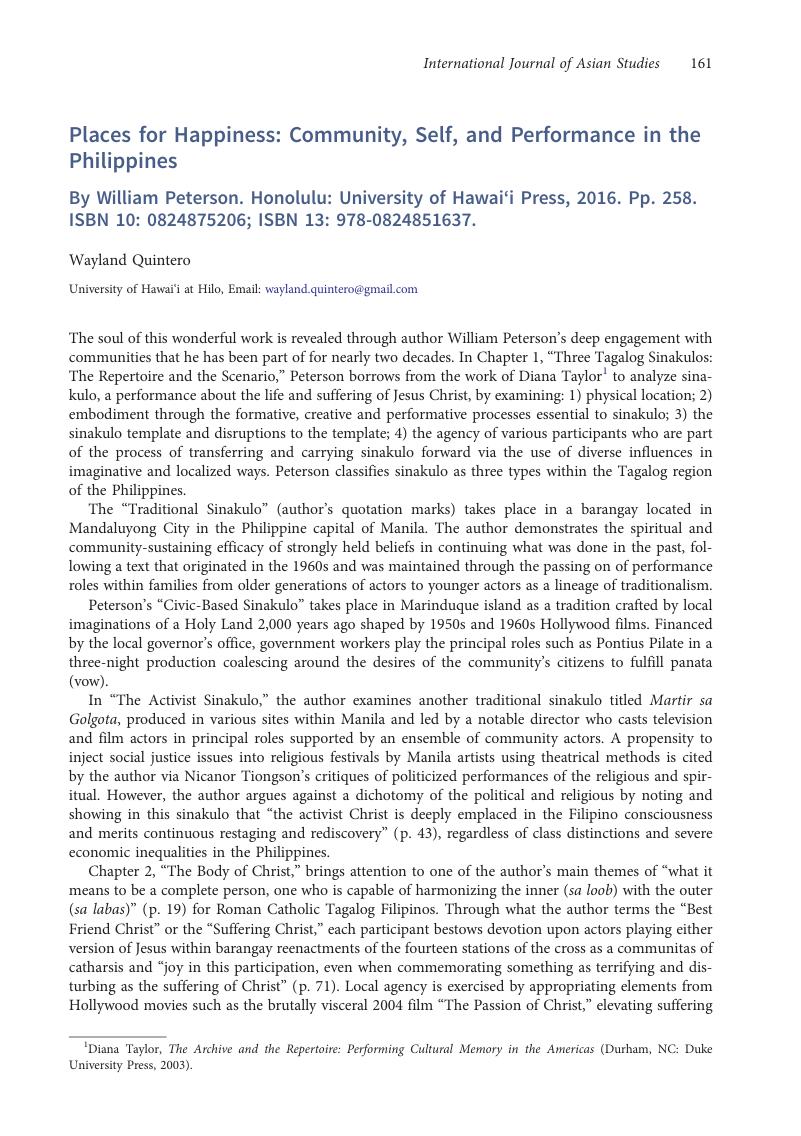No CrossRef data available.
Published online by Cambridge University Press: 23 July 2019

1 Taylor, Diana, The Archive and the Repertoire: Performing Cultural Memory in the Americas (Durham, NC: Duke University Press, 2003)CrossRefGoogle Scholar.
2 Warren, James F.. The Sulu Zone, 1768–1898: The Dynamics of External Trade, Slavery, and Ethnicity in the Transformation of a Southeast Asian Maritime State (Singapore: Singapore University Press, 1981)Google Scholar.
3 Desiree A. Quintero. “Inhabiting Pangalay ha Kulintangan as Suluk in Sabah, Malaysia.” Unpublished Ph.D. dissertation, University of Malaya, 2016.
4 Quintero, Desiree A., “Tiyula Itum and Pangalay: Suluk Anthemic Expressions in Sabah, Malaysia,” Borneo Research Journal 11 (2017), pp. 118–32CrossRefGoogle Scholar.
5 Quintero, Desiree A. and Nor, Mohd Anis Md, “The Curvilinear Ethnoaesthetic in Pangalay Dancing among the Suluk in Sabah, Malaysia,” Wacana Seni Journal of Arts Discourse 15 (2016), pp. 1–25CrossRefGoogle Scholar, http://dx.doi.org/10.21315/ws2016.15.1.
6 Russ Patrick Perez Alcedo, “Traveling Performance: An Ethnography of a Philippine Religious Festival.” Ph.D. dissertation, University of California Riverside, 2003; Alcedo, “Sacred Camp: Transgendering Faith in a Philippine Festival,” Journal of Southeast Asian Studies 38:1 (2007), pp. 107–32CrossRefGoogle Scholar; Alcedo, “How Black Is Black?: The Indigenous Atis Compete at the Ati-atihan Fesival.” in Dance Ethnography and Global Perspectives, eds. Dankworth, Linda E. and David, Ann R. (London: Palgrave Macmillan, 2014), pp. 37–57CrossRefGoogle Scholar.